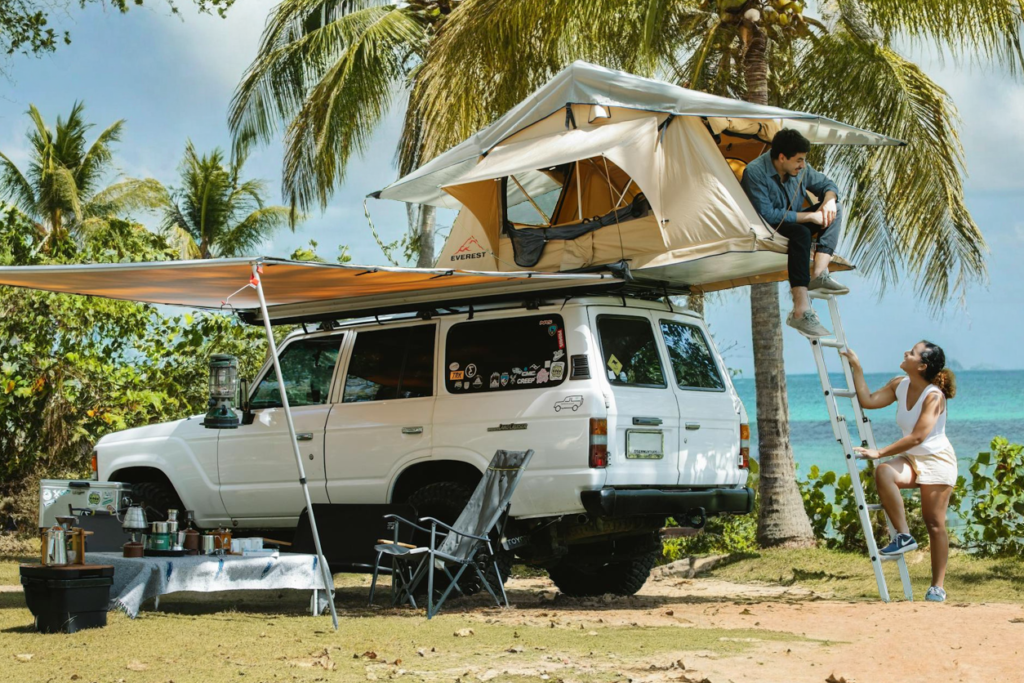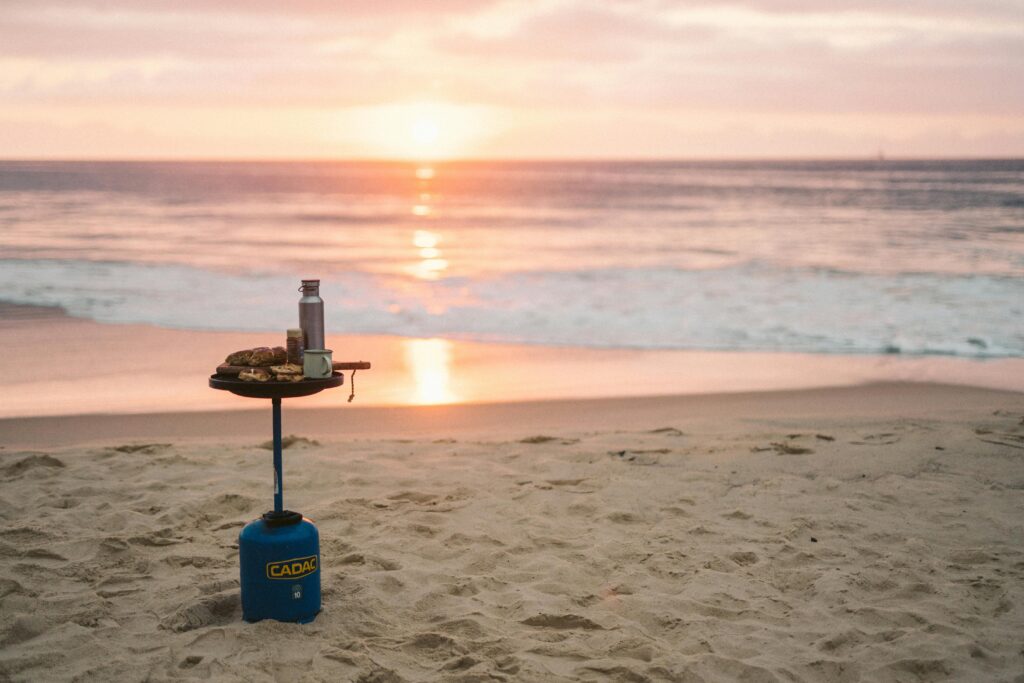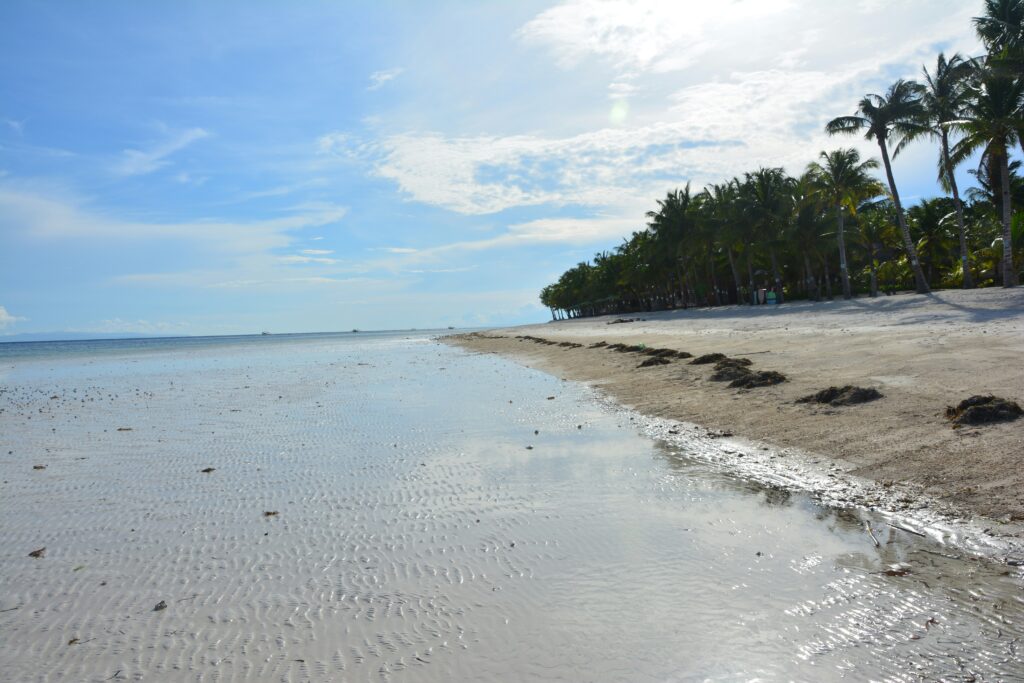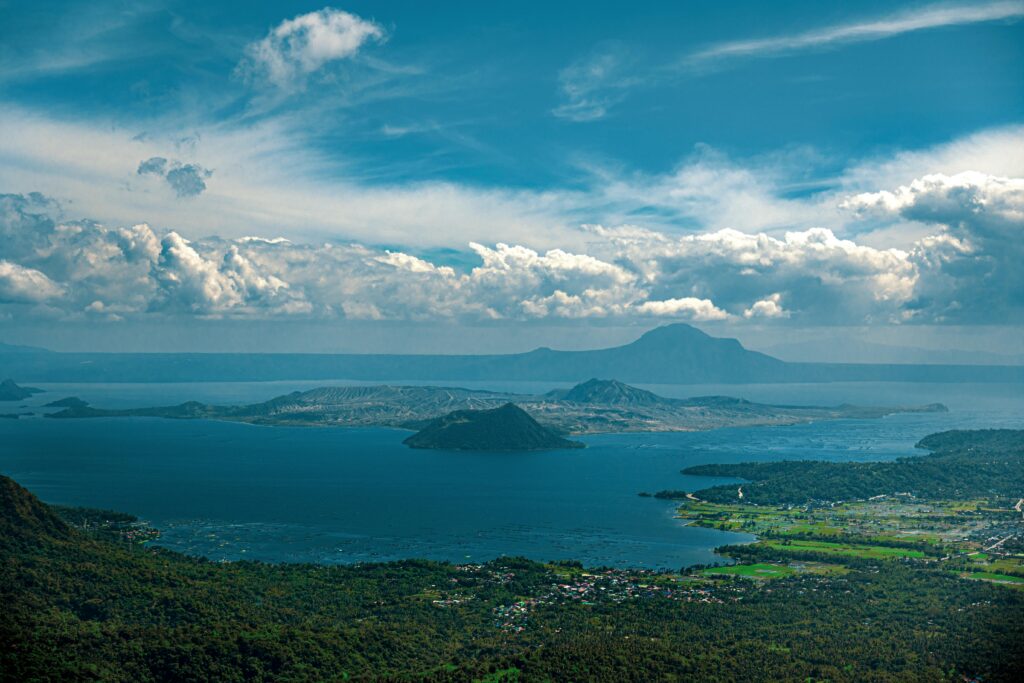Imagine waking up to the sound of waves, brewing coffee beside your 4×4, and setting off with no itinerary — just you, the road, and the wild beauty of the Philippines. That’s the promise of a camper rental in the Philippines. And in 2025, it might just be the smartest way to travel the islands.

1. Why Camper Rental in the Philippines Is the New Way to Travel
The Philippines is known for its stunning beaches, mountain terraces, and endless islands — but getting around isn’t always easy. Public transport is unpredictable, many roads are remote, and hotels often tie you to one place.
That’s where a rooftop camper changes everything.
These campers are fully equipped 4×4 vehicles with tents mounted on the roof, a kitchen built into the trunk, solar-powered lighting, and everything you need to live off-grid in comfort. Think of them as your personal mobile beach hut, mountain cabin, and jungle hideaway — all rolled into one.
👉 Learn more about what’s included on the Pricing Page

2. Real Freedom: A Day in the Life of a Camper Rental in the Philippines.
Let’s say you start your day in Baler. The surf’s good, so you stick around another night. You cook breakfast with ingredients you picked up at the public market the day before. After a midday nap in the shade, you check your Garmin GPS — the road to Dingalan looks quiet, and a hidden campsite nearby catches your eye.
So you drive.
You arrive just before golden hour. It’s quiet. Just birds and waves. You pop open the rooftop tent, pull out the chairs, and settle in. No check-ins. No noise. No planning needed.
This is what camper rental in the Philippines can offer: moments like these.
👉 Explore our recommended route ideas on the Suggested Tours page.

3. Not Just Cheaper — Smarter Travel
Let’s talk about money. For instance, a mid-range resort in Luzon or Mindoro might run you ₱5,000 to ₱12,000 per night.
With a rooftop camper:
- Accommodation is built in
- You can cook your own meals
- No need for separate rentals or guided tours
As a result, over a 10-day trip, this can save you ₱30,000–₱50,000 ($535–$890). But the real value?
More importantly, you’re not being limited to tourist zones or overpriced resort areas.
Instead, you choose where to go — and stay — without compromise.
4. From Wild to Wired: Comfort Off the Grid
The idea of “camping” in the Philippines can be intimidating. High heat. Heavy rain. Bugs. But rooftop campers are designed for exactly these conditions:
- Elevated tents with real mattresses and airflow
- Solar power for lights and fans
- A fridge, gas stove, cookware — all included
- Optional Starlink internet for staying connected remotely
Whether you’re looking to unplug or work remotely by the ocean, this setup can adapt to both
If you’re new to overlanding and want to learn more about this unique style of travel, check out this beginner’s guide to overlanding by Expedition Overland.
5. Where Hotels Can’t Take You
Tourism in the Philippines usually means shuttles and fixed destinations: Palawan, Siargao, Boracay. But there’s a whole other side to the country — one that isn’t built for mass tourism.
Rooftop campers give you access to:
- Hidden waterfalls in Aurora
- Secluded coves near Pagudpud
- Jungle roads in the Sierra Madre
- Quiet cliffs in Ilocos Norte
These are the places where you’ll meet locals, see stars like you’ve never seen, and find campsites nobody has Instagrammed yet.

6. Who This Travel Style is For (And Who It’s Not)
This is why Rooftop campers aren’t just for hardcore adventurers. They’re great for:
- Couples looking for solitude and flexibility
- Families who want to explore safely
- Solo travelers with a sense of curiosity
- Creatives who crave nature and stillness
Not into camping? That’s fair. But if you’re open to something different — with actual beds, not sleeping bags — this could change how you travel forever.
7. When you compare camper rental in the Philippines with hotel-based travel, the difference is freedom.
| Feature | Rooftop Camper | Traditional Travel |
|---|---|---|
| Accommodation | Included with the camper | ₱5,000–₱12,000/night |
| Food | Cook your own or eat out | Usually restaurant only |
| Route flexibility | 100% flexible | Limited to booked stays |
| Access to remote spots | Yes, including off-road areas | No, unless on guided tours |
| Nature experience | Full immersion | Often distant (from resort) |
| Booking hassle | None | High — every location requires a reservation |
8. Is It Safe to Camp in the Philippines?
Yes — especially in a rooftop camper. In addition, you’re elevated off the ground, protected from wildlife and flooding, and mobile if you need to relocate. Plus, our rental includes a list of verified safe camping spots, GPS navigation, and emergency support.
We also include:
- First aid kit
- Fire extinguisher
- Night lighting
- Optional Starlink for remote connectivity
Camping safely is all about being prepared — and we make sure you are.

Final Thoughts: The Best Way to Travel the Philippines in 2025
A rooftop camper lets you explore the Philippines your way. Skip the crowds, avoid the expensive resorts, and take the road less traveled — literally. It’s more than just a new way to travel. It’s the best way to truly experience the country in 2025.
You’ll discover hidden places, meet locals in quiet towns, and fall asleep in some of the most beautiful places you’ve ever seen — without having to leave your bed behind.
